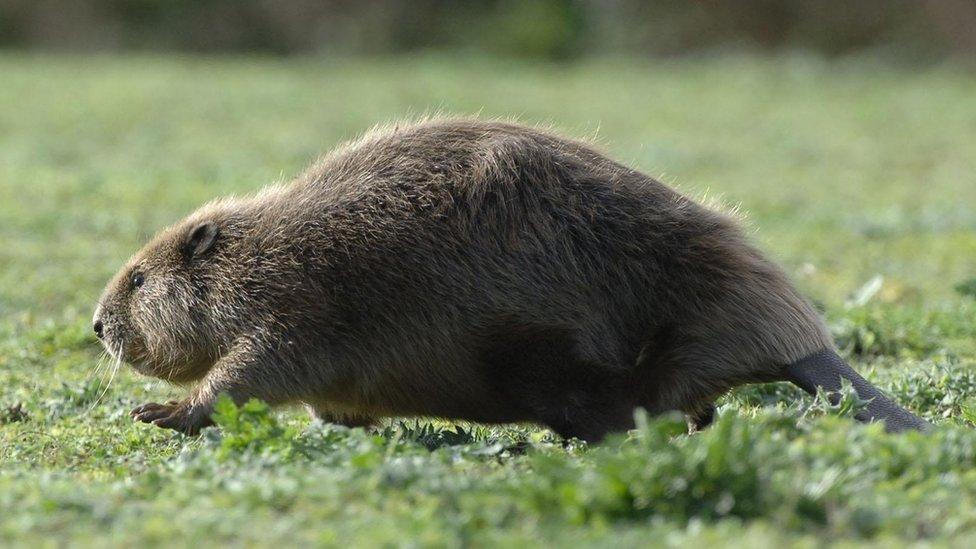Essex beaver flood defences 'stood up well' in winter rain
- Published
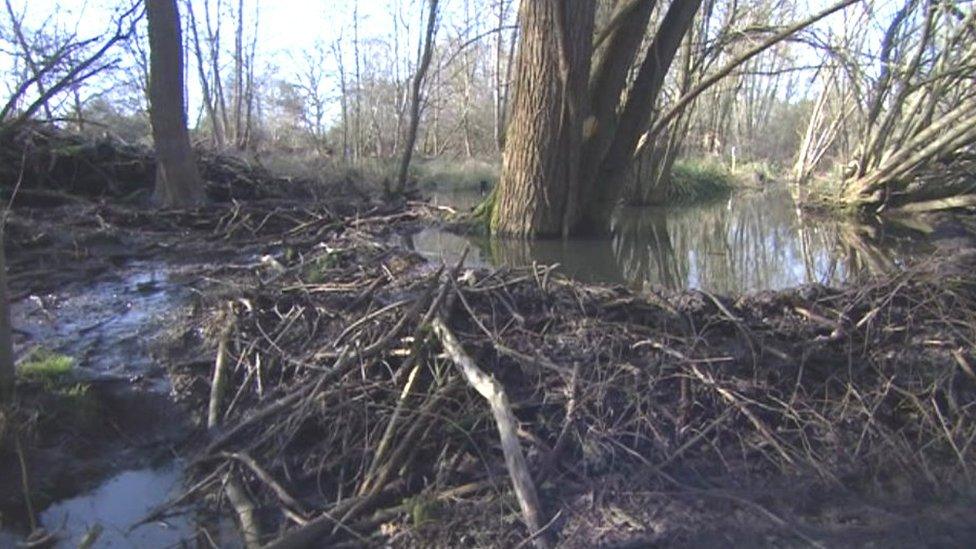
The beavers have created dams using sticks and mud
Flood defences made by two beavers have "stood up well" during a wet winter, according to the man behind the scheme.
The Eurasian beavers, which were bred in captivity, were introduced at the Spains Hall Estate in Finchingfield, Essex, in March to try to reduce flooding in the nearby village.
Since then they have built about 20 dams and created an area of wetland.
Estate owner Archie Ruggles-Brise said the "natural solution... certainly seems to be working".
'Natural solution'
Finchingfield, near Braintree in north Essex, was flooded in 2014 and 2012.
Mr Ruggles-Brise had been shown research on beavers in Devon, which concluded they had reduced the risk of flash floods and so decided to introduce them himself.
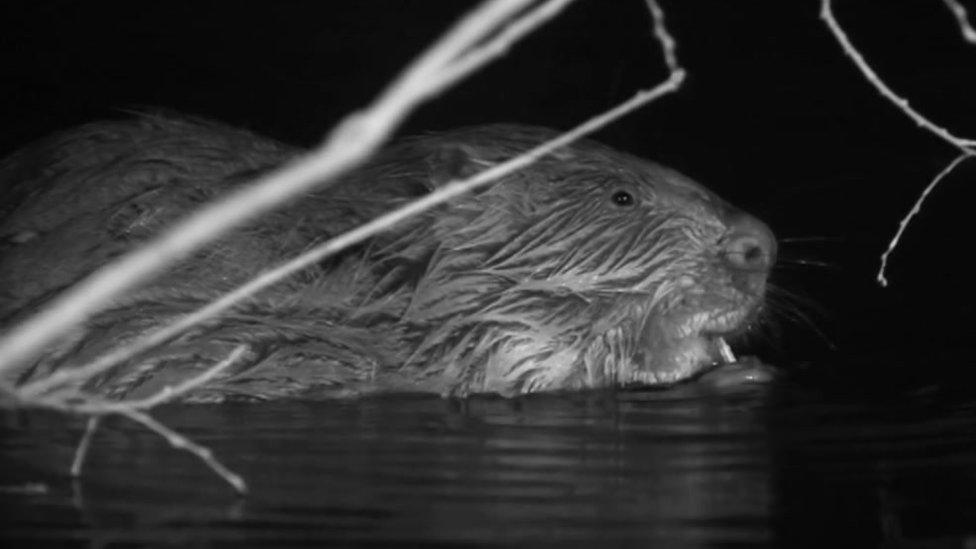
The mammal has been reintroduced in small numbers in other parts of the country in recent years
It is the first time the animals have been in the wild in Essex in 400 years and, in just under a year, the animals have created a wetland area which holds the water at a higher level upstream.
They are now not building so many new dams but adding to existing ones.
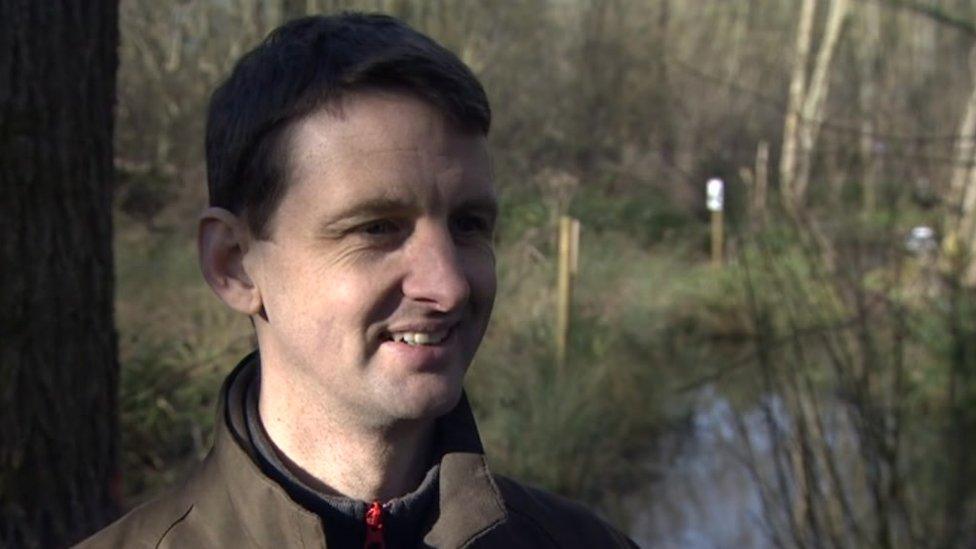
Archie Ruggles-Brise said experts were looking at the data
Mr Ruggles-Brise said that some rain over two days just before Christmas tested both the beaver and man-made dams but "everything stood up well".
"It certainly seems to be working. You can't say for certain - there's a lot of data being collected and the experts are looking at that now - but my gut feel is yes, it probably is [working]."
The Environment Agency had described it as a "pioneering approach" to tackling local flooding.
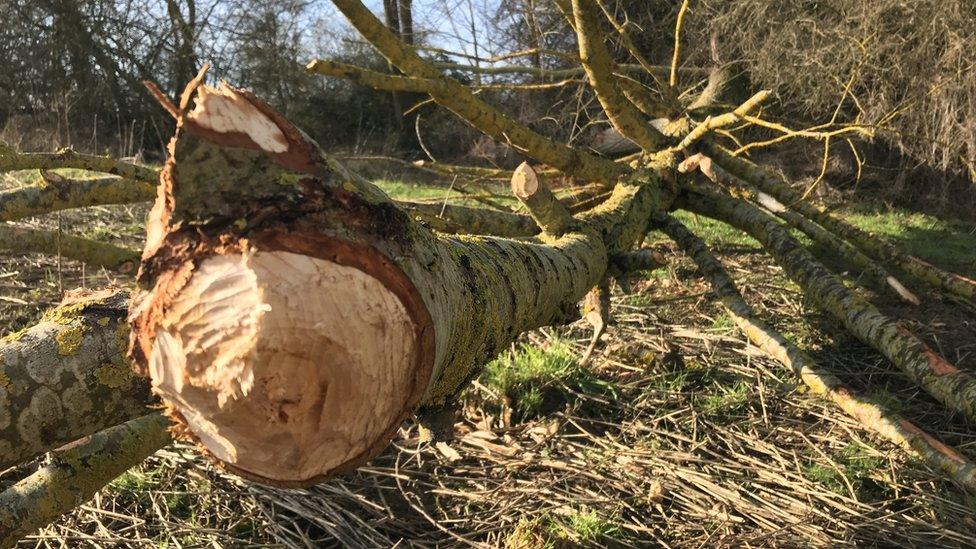
The beavers are now adding to their existing dams
- Published21 May 2019
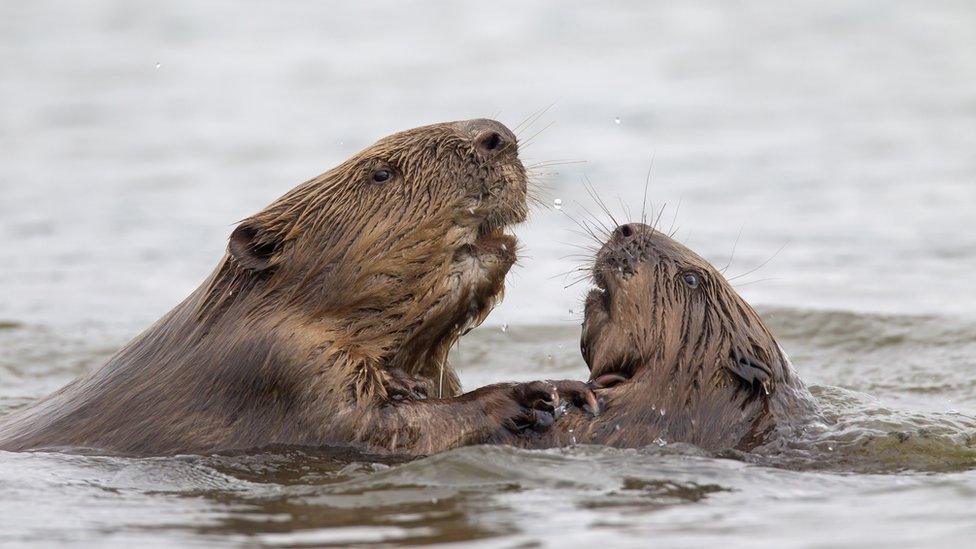
- Published17 March 2019
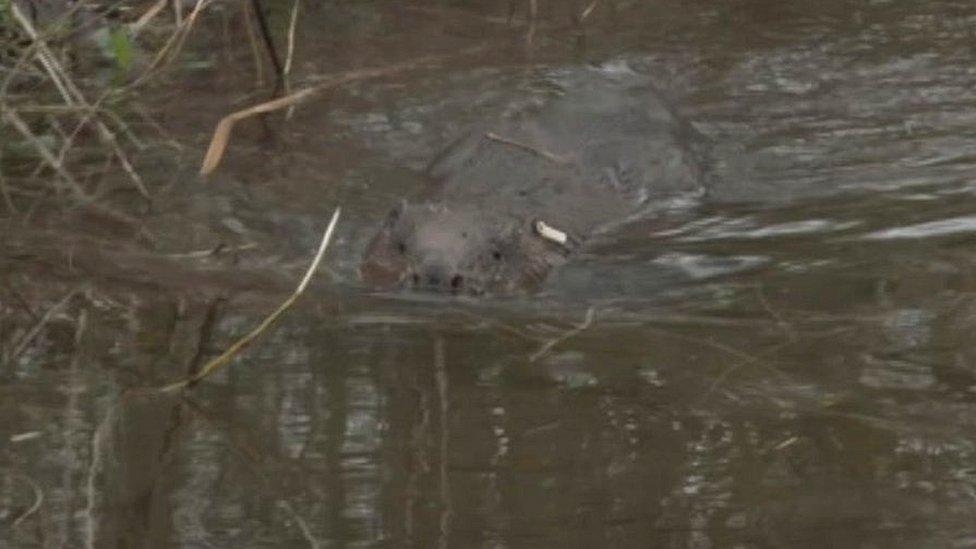
- Published5 November 2018

- Published3 June 2017
